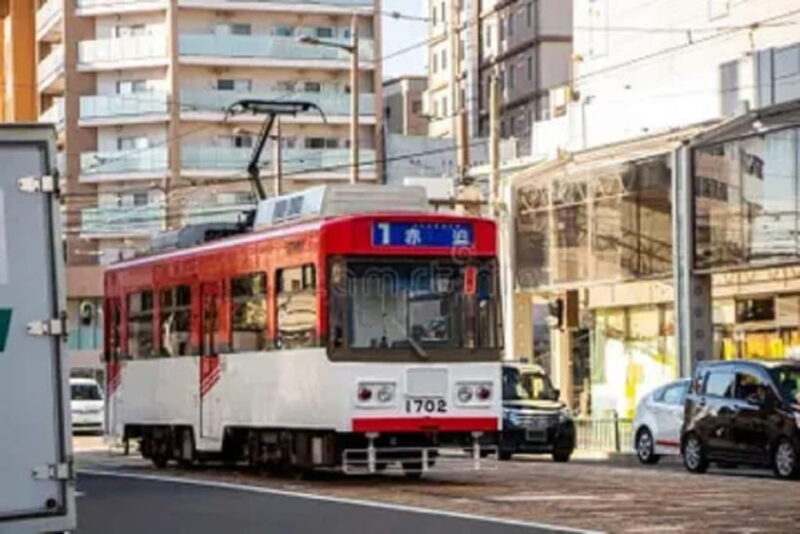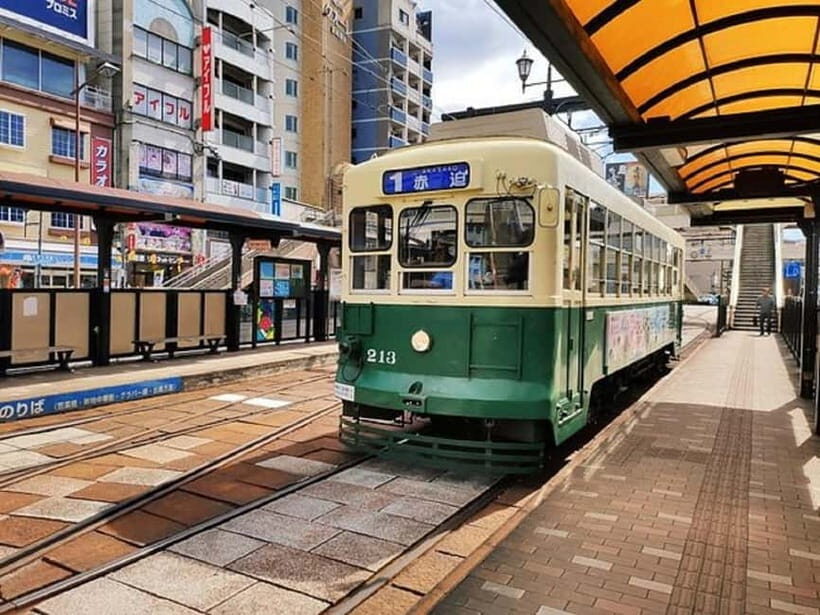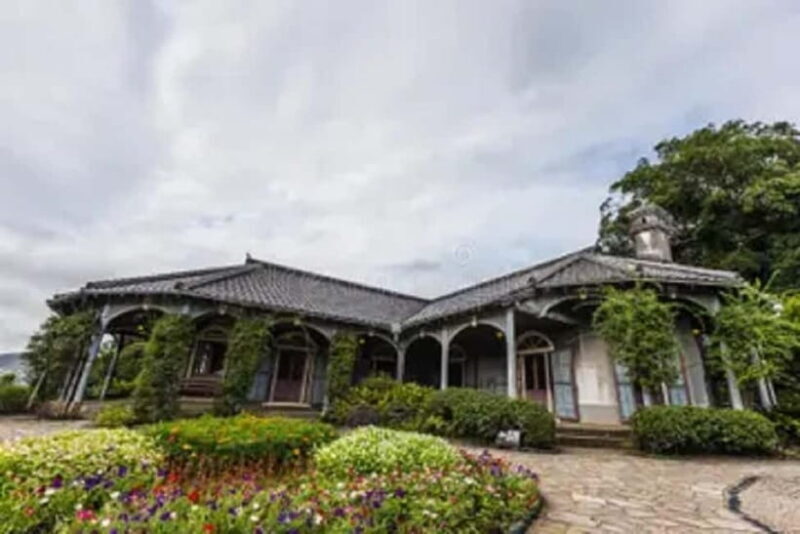If you’re visiting Japan’s southern island of Kyushu, this tour offers a compelling glimpse into Nagasaki’s layered past. For around $290 per person, you’ll spend a day exploring some of the city’s most significant sites: Oura Catholic Church, Nagasaki Peace Park, and the Atomic Bomb Museum. Led by knowledgeable guides, this experience promises a mix of history, reflection, and stunning views, all packed into a well-structured itinerary.
Two aspects we particularly appreciate are how the tour balances historical context with emotional impact—particularly at the Peace Park—and how the inclusion of Glover Garden offers a scenic contrast to the more somber sites. It’s a well-rounded way to absorb Nagasaki’s story.
A potential consideration is the amount of walking involved, which can be taxing on hot days or for those with mobility issues. It’s best suited for travelers who enjoy history, culture, and thoughtful reflection rather than those seeking a purely casual sightseeing day.
This tour is perfect for those interested in Japan’s Christian heritage, WWII history buffs, and travelers who want a meaningful, guided experience that covers the city’s pivotal sites in a single day.
Key Points
- Historical Significance: Visits to Japan’s oldest wooden church and the Atomic Bomb Museum provide deep educational value.
- Emotional Reflection: The Peace Park statue beautifully symbolizes hope and remembrance.
- Scenic and Cultural Contrast: Glover Garden offers a peaceful stroll through Western-style architecture.
- Comprehensive Experience: The tour covers a variety of sites—religious, historical, and modern—giving a well-rounded view of Nagasaki.
- Practical Details: Includes entry to Glover Garden, Oura Church, and the Atomic Bomb Museum; no hidden costs.
- Physical Demands: Expect a fair amount of walking, so comfortable shoes are a must.
An In-Depth Look at the Nagasaki Tour

Planning more time in Nagasaki? We've covered other experiences worth considering.
Starting Point and Overall Structure
The tour begins at the Open-air Concert Hall, where everyone gathers before setting out. This spot serves as a convenient meeting point and sets a friendly, communal tone for the day. The group then moves through Nagasaki’s streets, which, while walkable, involve some uneven surfaces and stairs—something to consider if mobility is an issue.
The entire experience lasts several hours, offering a leisurely pace that allows for reflection at each stop. The guide, whose friendly demeanor and knowledge shine through, helps connect the dots of Nagasaki’s complex history.
Oura Catholic Church: Japan’s Oldest Wooden Church
Your first stop is Oura Catholic Church, a designated National Treasure and a must-see for history buffs and architecture lovers alike. Built by French missionaries, this Gothic-style church was constructed in the 19th century and is the oldest wooden church still standing in Japan.
What makes this site particularly meaningful is its connection to Japan’s Christian heritage—a heritage that was once suppressed but has left an indelible mark. As you walk inside, you’ll notice the serene atmosphere, echoing centuries of prayer and resilience. The church’s architecture, with its pointed arches and stained glass windows, offers a glimpse into Western influence in a predominantly Buddhist and Shinto country.
Visitors often comment on the peaceful ambiance and the historical poignancy of the site. One reviewer said, “It’s quiet, almost reverent, and gives you a sense of how brave the early Christians must have been to worship openly here.”
Nagasaki Peace Park: A Symbol of Hope and Reflection
Next, you’ll head to Nagasaki Peace Park, a space dedicated to the victims of the atomic bombing and a symbol of peace and reconciliation. The park’s centerpiece is a powerful statue depicting the love of God and mercy of Buddha, with arms pointing skyward and outward—symbolizing hope and prayer for a future free of nuclear devastation.
The statue’s face isn’t overtly divine but rather serene and contemplative, inviting visitors to reflect on the tragedy and the desire for peace. A visitor noted, “It’s a quiet moment where you feel the weight of history but also the hope for a better future.”
Surrounding the statue are inscriptions and memorials honoring the approximately 70,000 victims of the bombing. The peaceful setting, combined with the symbolic sculpture, offers a space for personal reflection and collective mourning, making it one of the most emotionally resonant parts of the tour.
More Great Tours NearbyThe Atomic Bomb Museum: An Educational and Moving Experience
The final major stop is the Atomic Bomb Museum, which presents the history of Nagasaki’s bombing in a straightforward, impactful way. Exhibits include photographs, personal stories, and artifacts that illustrate the devastation and the subsequent recovery.
The museum’s layout makes the complex history accessible without feeling overwhelming. It also emphasizes the importance of nuclear disarmament and peace, making it relevant even today. Visitors often find themselves moved by the displays, contemplating the long-lasting effects of nuclear war. One reviewer mentioned, “It’s a sobering but necessary reminder of how fragile peace can be, and how much work remains to keep it.”
Glover Garden: Western Elegance and Panoramic Views
To break up the more intense emotional stops, the tour includes Glover Garden, a park filled with Western-style buildings that tell the story of Nagasaki’s international trade history. The gardens are perched on a hillside, offering panoramic views of the city and harbor.
Walking through Glover Garden feels like stepping into a different world—one of elegance, history, and scenic beauty. It’s an ideal spot for photos or a quiet moment away from the emotional weight of the previous sites. Visitors enjoy the blend of cultural influences and the peaceful atmosphere.
What We Love About This Tour

The tour’s balance of history, reflection, and scenic beauty makes it stand out. We especially appreciate how the Peace Park statue encapsulates Nagasaki’s message of hope and forgiveness, making it a meaningful highlight. Plus, the inclusion of Glover Garden’s beautiful architecture and views provides a pleasant breather and contrast.
The guides, often praised for their knowledge and friendliness, bring these sites to life with engaging stories and context—an important factor when visiting such emotionally charged locations. The fact that admission to key sites is included in the price means you won’t have to scramble for tickets or worry about extra costs, which adds to the overall value.
Things to Consider

While this tour offers a lot of depth, it involves a fair amount of walking, often over uneven ground and stairs. If you have mobility issues or prefer a more relaxed pace, you might find certain parts challenging. The tour is also quite focused on historical and cultural sites, so if you’re seeking a more leisurely, less educational experience, it might not be the best fit.
Plus, since the tour involves visits to serious sites, it’s best suited for travelers interested in reflection and learning rather than casual sightseeing. The weather can also influence your experience—be sure to dress appropriately and bring essentials like sunscreen, water, and comfortable shoes.
The Sum Up
This guided tour of Nagasaki offers a comprehensive and meaningful way to understand the city’s complex history and resilient spirit. It’s especially well-suited for travelers who want to see key sites with the guidance of a knowledgeable local, and who appreciate a balance of educational content and scenic beauty.
You’ll walk away with a deeper understanding of Japan’s Christian past, the horrors of nuclear war, and the city’s ongoing commitment to peace. The inclusion of sites like Glover Garden also adds a touch of elegance and a chance to enjoy Nagasaki’s beautiful vistas.
If you’re looking for an experience that combines history, emotion, and cultural insight—all in a manageable day—this tour is a solid choice. Just come prepared for walking, reflect thoughtfully at each stop, and leave with a greater appreciation for Nagasaki’s story and its message of hope.
FAQ

Is this tour suitable for children?
While there’s no explicit age limit, the tour involves walking and visiting serious, emotionally charged sites, so it’s best for older children who can handle reflective experiences and long walks.
Are meals included in the tour?
No, meals and beverages are not included. You might want to plan to grab a snack or lunch after the tour or bring water during the day.
Is transportation provided between sites?
The tour follows a walking route from the meeting point to each site. There’s no mention of private transport, so comfortable shoes are essential.
Are there any age restrictions?
The tour is not suitable for people over 95 years old or those with mobility impairments due to uneven surfaces and stairs.
Can I cancel the tour if my plans change?
Yes, you can cancel up to 24 hours in advance for a full refund, offering some flexibility if your plans shift.
Is the tour available in languages other than English?
The experience provider offers tours in both English and Japanese.
Are there any restrictions on photography?
Flash photography is not allowed inside the museums, and food or drinks are prohibited inside. Be respectful of the solemnity of the sites.
Do I need to reserve my spot in advance?
Yes, it’s recommended to reserve ahead, especially during busy seasons, and you can keep plans flexible by paying later.
This tour provides a sincere, respectful way to encounter Nagasaki’s history and hopes, suitable for travelers looking for depth and authenticity in their journey.
You can check availability for your dates here:More Guided Tours in Nagasaki
More Tours in Nagasaki
More Tour Reviews in Nagasaki
- Nagasaki:Customizable Nagasaki City Walk Private Guided Tour
- Matsuura: Kiraku Restaurant Aji Fry Meal Voucher
- Nagasaki: Explore Japanese Teas on a Tea Tour
- Nagasaki: Goto Udon Making Experience with Certificate
- Nagasaki Heritage Trail: Cathedrals, Bridges & Chinatown
- Kyushu 9-hour chartered day trip Nagasaki
